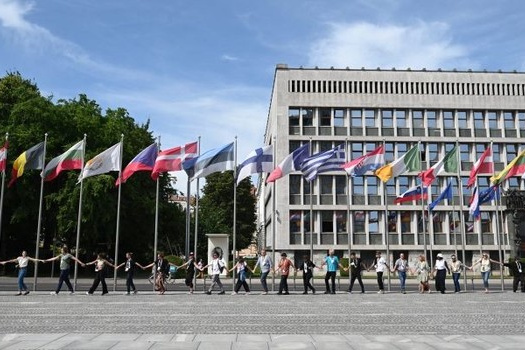Post of Slovenia’s dialect-aware AI
In a breakthrough for customer service technology, Slovenia’s national postal service has unveiled an AI assistant that can chat with customers in 12 different Slovenian dialects – a first for the country’s AI landscape.
The Adriatic Team
Voice assistants have become increasingly sophisticated since their mainstream debut in the early 2010s, yet most have struggled with one persistent challenge: understanding regional accents and dialects. While major players like Alexa and Google Assistant have made strides in recognising various English accents, from Scottish to Australian, the development of AI assistants for smaller language markets has lagged behind, often forcing users to adapt their speech to standard language variants.
This challenge is particularly acute in countries like Slovenia, who boast rich dialectal variations, and where standard language forms may feel formal or unnatural in everyday communication. Traditional voice recognition systems typically work with standardised language models, and research shows these consistently struggle with various forms of speech diversity, be it regional accents, code-switching, and speech variations related to gender, age, or ability. In essence, if you don’t sound like the voices these systems were trained on, you’re more likely to face difficulties being understood.
As AI voice recognition systems become more prevalent in critical services, from healthcare and education to emergency response and law enforcement, these limitations can have serious consequences. Imagine trying to reach emergency services during a crisis, only to have an AI repeatedly fail to understand your accent or dialect.
Post of Slovenia breaks new ground with Pia
Short for Postal Interactive Assistant, Pia moves well beyond the robotic responses of traditional automated systems. Instead of forcing customers to adapt to rigid command structures, it engages in natural conversation while understanding the specifics of Slovenia’s regional accents and expressions.
Launched at the postal service’s Maribor headquarters on February 10, 2025, Pia will be able to redistribute some of the workload from the service’s 2,300 daily calls, handling customer inquiries through multiple channels: voice calls to 080 14 00, SMS messages, chat, and even Viber.
“With the introduction of this innovative solution like Pia, we want to offer our customers the best possible experience and enable them to obtain desired information even faster,” explains Vanja Belec, Head of Customer Care at Post of Slovenia. “We believe this technology will help improve the efficiency of our contact center and customer satisfaction, though we emphasise that this is artificial intelligence that is constantly learning and improving.”
Pia is integrated directly with Post of Slovenia’s internal systems and knowledge base, pulling accurate information in real-time while maintaining natural dialogue. Coming soon, customers will also be able to interact with Pia through Post of Slovenia’s mobile package tracking app.
This marks a significant shift in how public services approach automation. Rather than implementing a one-size-fits-all solution, Post of Slovenia has prioritised local linguistic diversity, developing an AI assistant that understands and responds appropriately whether a customer is speaking in the dialect of Ljubljana, Maribor, or any of Slovenia’s other distinct regional variants.
“This isn’t just a technological innovation – it’s the future that combines advanced artificial intelligence with a human approach,” says Marko Cegnar, General Director of Post of Slovenia. “It enables natural and intuitive communication, simplifies everyday work processes, and opens new opportunities for further enhancement of the user experience.”
By building an AI that embraces rather than flattens linguistic diversity, Post of Slovenia has taken a notable step forward in making automated customer service more accessible and user-friendly, demonstrating how AI solutions can be tailored to specific cultural contexts.
Its implementation could and should serve as a template for similar organisations grappling with linguistic diversity in their customer base, showing how technology can enhance and adapt to our needs, instead of forcing us to change them.









